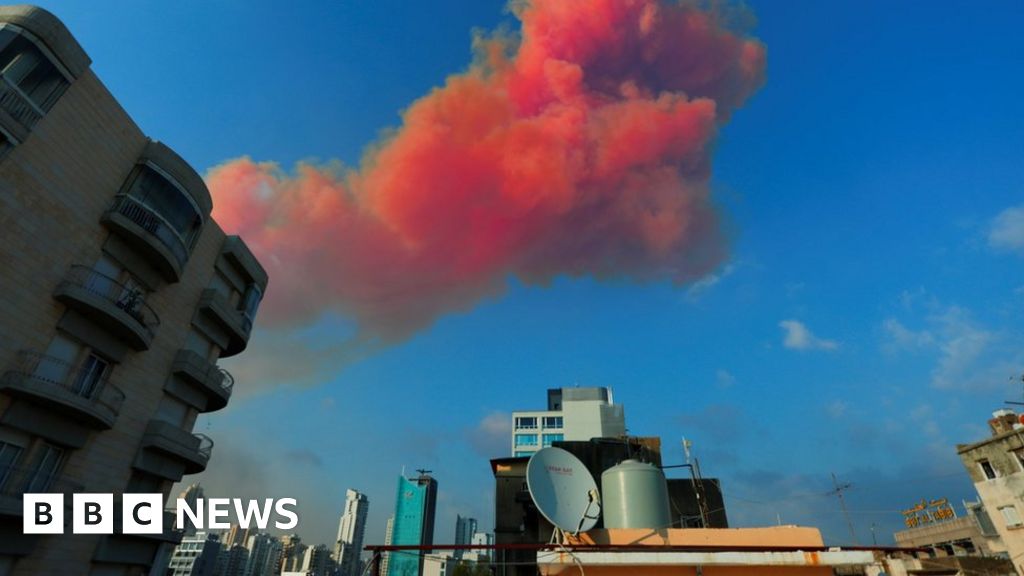By Tom Edgington
BBC News
image copyrightReuters
Nearly 3,000 tonnes of ammonium nitrate – taken from a ship off the coast of Beirut six years ago and then stored in a warehouse – has been blamed for the explosion that ripped through the port area of the Lebanese capital on Tuesday.
But what is ammonium nitrate and why can it be so dangerous?
What is ammonium nitrate?
Ammonium nitrate is a crystal-like white solid which is made in large industrial quantities. Its biggest use is as a source of nitrogen for fertiliser, but it is also used to create explosions for mining.
“You won’t just find ammonium nitrate in the ground,” explains Andrea Sella, professor of chemistry at University College London. That’s because it’s synthetic, made by reacting ammonia with nitric acid, he says.
Ammonium nitrate is made all over the world and is relatively cheap to buy.
But storing it can be a problem, and it has been associated with serious industrial accidents in the past.
How dangerous is ammonium nitrate?
On its own, ammonium nitrate is relatively safe to handle, says Prof Sella.
However, if you have a large amount of material lying around for a long time it begins to decay.
“The real problem is that over time it will absorb little bits of moisture and it eventually turns into an enormous rock,” he says. This makes it more dangerous, he adds, because it means if there is a shock, it will spread much more easily.
The longer it is left, the more likely it will get contaminated with items such as fuel oil, former senior military intelligence officer Philip Ingram told BBC Radio 4’s Today programme.
Once that happens it can produce a reaction in the chemical. “It generates its own heat and, once it’s started, it continues to generate it and that will build up over time,” Mr Ingram says. “That could then lead to the high-order explosion that we saw in those horrific videos that came out of Beirut.”
What caused the mushroom cloud?
Videos from Beirut showed smoke billowing from a fire, and then a mushroom cloud following the blast.
“You have a supersonic shockwave that is travelling through the air, and you can see that in the white spherical cloud which travels out from the centre, expanding upwards,” says Prof Sella.
The shockwave is produced from compressed air, he explains. “The air expands rapidly and cools suddenly and the water condenses, which causes the cloud,” he adds.
How dangerous are the gases produced?
When ammonium nitrate explodes, it can release toxic gases including nitrogen oxides and ammonia gas.
The orange plume is caused by the nitrogen dioxide, which is associated with air pollution.
“If there isn’t much wind, it could become a danger to the people nearby,” says Prof Sella.
Has anything like this happened before?
- In 1921, about 4,500 tonnes of ammonium nitrate caused an explosion a plant in Oppau, Germany, killing more than 500 people
- The deadliest industrial accident in US history occurred in 1947 at Galveston Bay, Texas. At least 581 people were killed when more than 2,000 tonnes of the chemical detonated on-board a ship which had docked in the port
- More recently, an explosion involving ammonium nitrate and other chemicals killed 173 people in the port of Tianjin northern China

